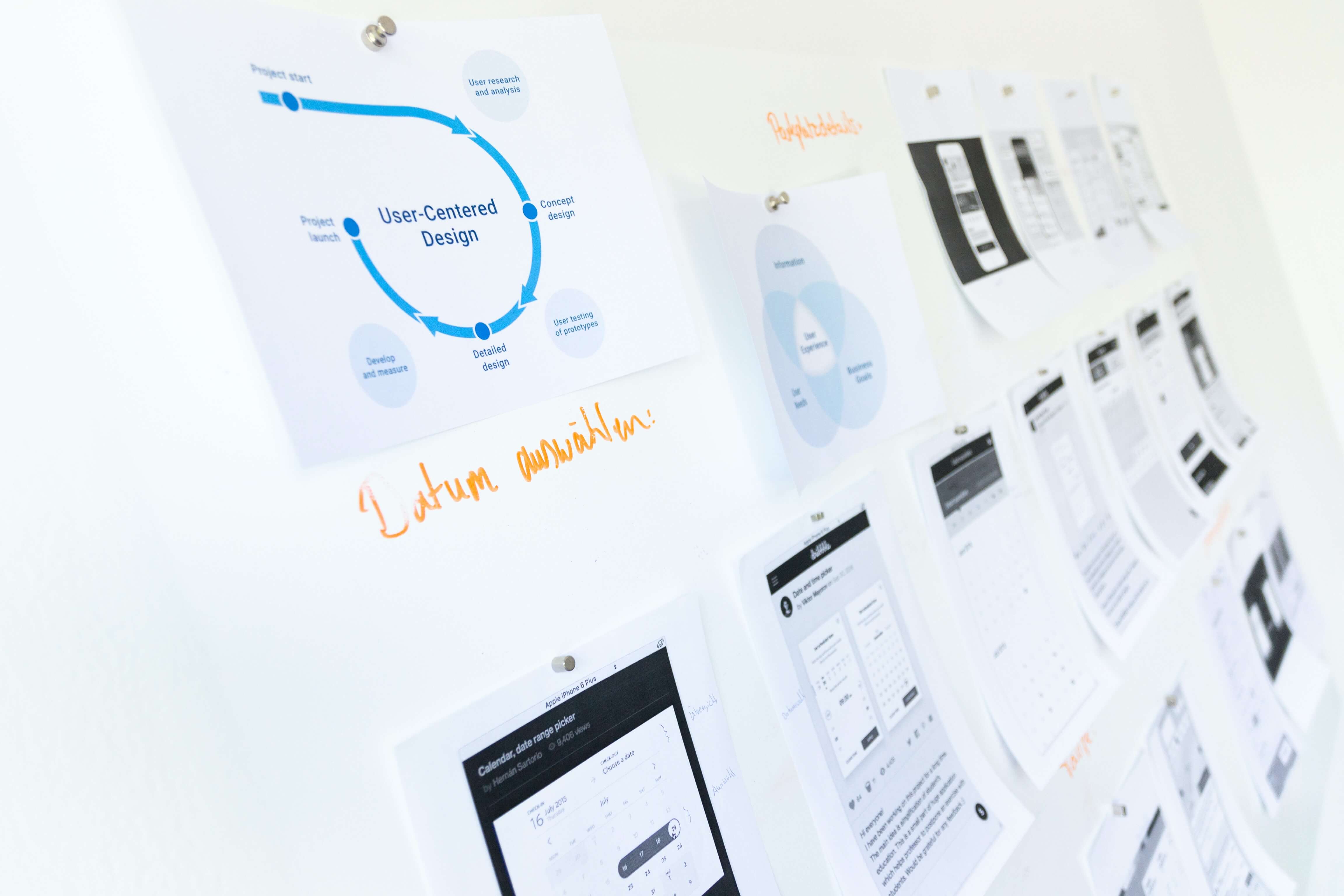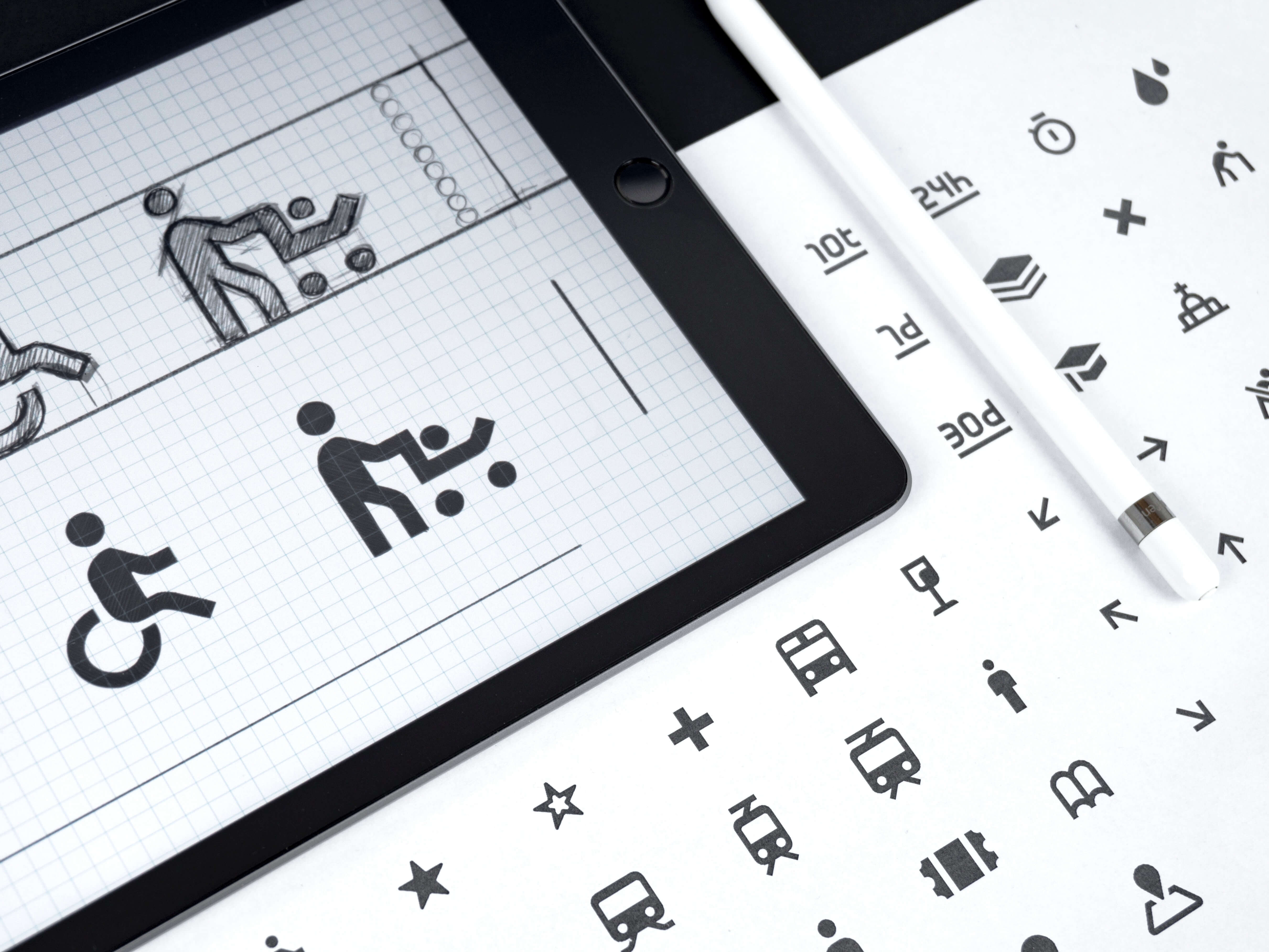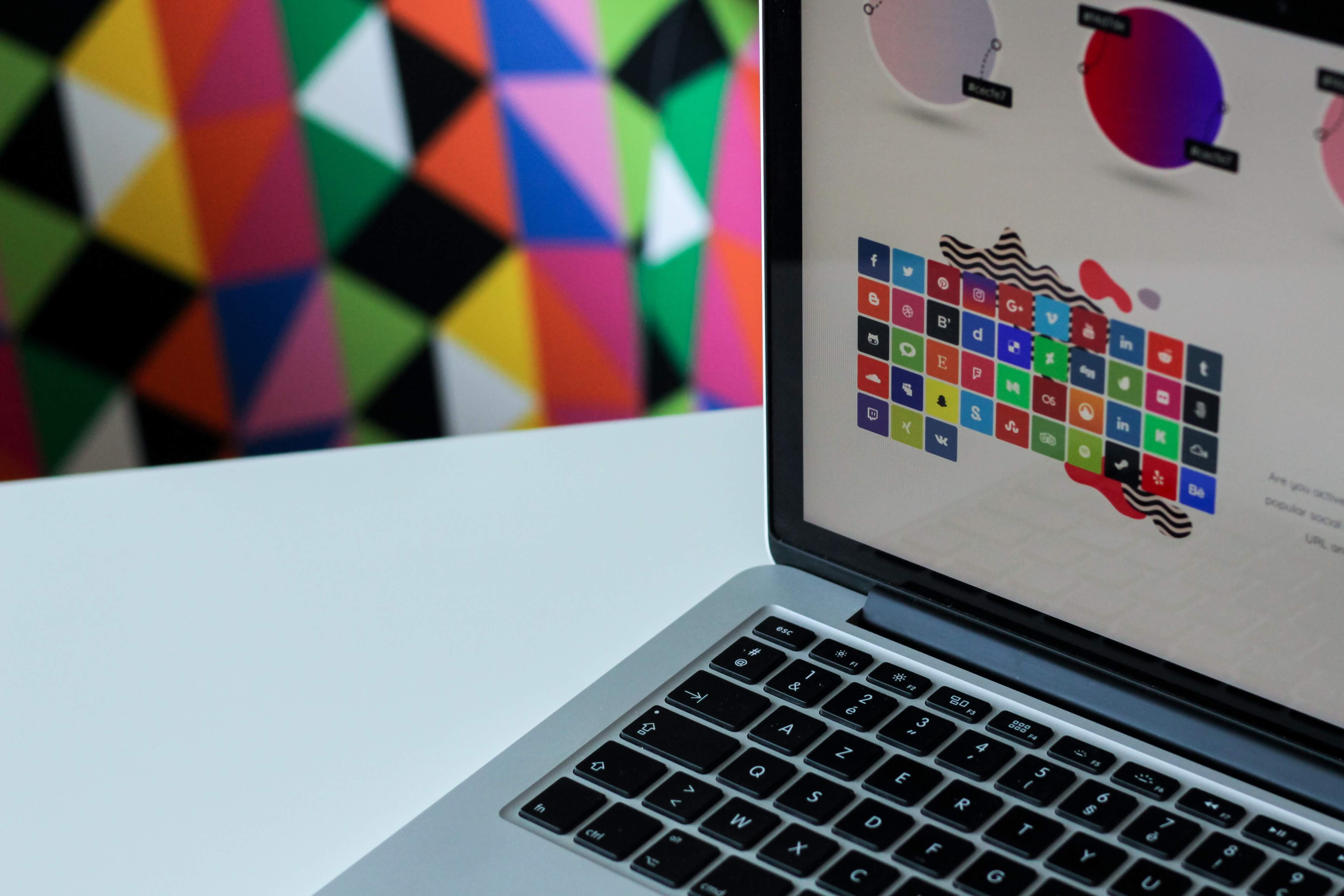UI UX Branding: Enhancing User Experience and Consistent Brand Identity
UI UX Branding: Enhancing User Experience and Consistent Brand Identity
As the digital landscape continues to evolve, the importance of UI/UX design in branding has become increasingly critical. With a plethora of options available to consumers, creating a consistent brand identity has never been more crucial. In this blog post, we'll explore the role of UI/UX design in branding and provide insights on how to create a cohesive brand identity.
What Is UI/UX Design, and Why Is It Important in Branding?

UI/UX design refers to the user interface and user experience design. UI design is the visual design of a digital product, while UX design services are the overall experience a user has while interacting with that product. These designs are crucial in branding because they represent a company's image and the value it provides to its customers.
Discover how ATAK uses the best tools in UX Research and Analysis.
A UX UI design service helps establish a consistent look and feel across a company's digital presence. This consistency is essential in creating brand recognition and making the user experience seamless across different platforms. UI/UX design can also help a company stand out in a crowded market by creating a unique and memorable brand image.
In addition to aesthetics, a UX UI design service plays a critical role in improving the usability of a digital product. A well-designed interface can improve the user experience by making it easier for users to accomplish their tasks, increasing user engagement, and reducing user frustration. A positive user experience can lead to increased customer loyalty and ultimately, more sales.
To sum it up, a UX UI design service is essential in branding because it helps businesses create a unique and consistent brand image, improve usability, and increase customer loyalty. It is a critical component of any digital strategy and should be given due attention during the design process.
How to Create a User-Centered Design for Your Brand
Creating a user-centered design is an essential part of building a successful brand. A user-centered design puts the needs of the user at the center of the design process, ensuring that the final product is intuitive, user-friendly, and meets the needs of the target audience. Here are some steps to create a user-centered design for your brand:
First, define the target audience. It is crucial to understand the target audience's needs, motivations, and pain points to create a design that meets their requirements. Conduct user research to gather information about the target audience and create user personas to represent the different types of users.
Next, create a user flow. A user flow is a map that outlines the user's journey through the product. This flow helps to identify potential roadblocks and improve the user experience.
Once you have the user flow, create wireframes. Wireframes are a visual representation of the product's layout and functionality. It is an excellent way to test the design's usability and make changes before moving to the final design phase. Learn why hiring a UI/UX design agency is a great investment.
The Power of Color Psychology in Branding

Color plays a crucial role in branding. It is a powerful tool that can evoke emotions, create a specific mood, and influence consumer behavior. Color psychology is the study of how color affects human behavior, and it is essential in creating a successful brand. This is just one of many strategies for successful branding in marketing, find more marketing tips from leading agencies here.
Choosing the right color palette is crucial in creating a strong brand image. Each color has its own meaning and can convey a specific message. For example, red can evoke feelings of passion, excitement, and urgency, while blue can evoke feelings of trust, loyalty, and security. Understanding the meanings of different colors and their impact on consumer behavior is essential in creating a successful brand.
Color also plays a critical role in creating brand recognition. Consistency in color usage across different platforms can make the brand easily recognizable, increasing brand awareness and improving brand recall.
Typography and Its Role in Brand Identity
Typography is the art and technique of arranging type to make written language legible, readable, and appealing when displayed. In brand identity, typography plays a crucial role in communicating a brand's personality, values, and tone of voice. Selecting the right typeface can create a visual language that supports and enhances a brand's message, while the wrong choice can be disastrous. Typography can help a brand stand out, reinforce its message, and foster brand recognition. This type of work can be done by a UI UX design services company, especially cause it requires not only time but a lot of knowledge.
When choosing typography for a brand, it's essential to consider factors such as legibility, scalability, and versatility. A font that looks great on a billboard may not work well in small sizes or on a digital platform. The typography also needs to align with the brand's tone of voice and personality, whether that's bold and daring or elegant and refined. Some brands have even created custom fonts to ensure that their typography is unique and instantly recognizable.
Typography is an integral part of a brand's visual identity and should be used consistently across all brand assets. Consistent use of typography helps to create a sense of cohesion and reinforces brand recognition. It also helps to build trust with consumers, who can easily identify the brand through its consistent use of typography. Overall, typography is an essential tool for creating a memorable and effective brand identity.
The Importance of Consistency in Branding

Branding is the process of creating a unique identity for a company or product. Consistency is a critical component of effective branding. Consistency means using the same visual elements, tone of voice, and messaging across all brand touchpoints, whether that's a website, social media, or physical marketing materials. When a brand is consistent, it becomes instantly recognizable and memorable.
Consistency in branding also helps to build trust with consumers. When a brand's message and visual identity are consistent across all touchpoints, consumers feel more confident in the brand and are more likely to engage with it. Inconsistency in branding can lead to confusion and mistrust, making it challenging for consumers to understand what the brand stands for and what it offers.
To achieve consistency in branding, it's essential to develop a brand style guide. A style guide outlines the brand's visual elements, such as typography, color palette, and logo usage. It also includes guidelines for tone of voice and messaging. By hiring a UI UX design service you can get everyone involved in creating brand assets can ensure that they are consistent with the brand's overall identity. If you are not sure how to choose these services, please read this guide on how to choose the best marketing agency for you.
Consistency is crucial not only for building a strong brand identity but also for creating a sense of trust and familiarity with consumers. By being consistent in all touchpoints, a brand can create a cohesive and memorable image that consumers will come to recognize and trust over time.
How to Use Visual Elements to Create a Strong Brand Identity
Visual elements are a crucial component of brand identity. Working with a UI UX design services company can help you create a strong visual identity to differentiate your brand from its competitors and create a memorable impression on consumers. When creating a visual identity, it's essential to consider factors such as color, typography, imagery, and logo design.
Color is an essential visual element in branding. Different colors can evoke different emotions and associations, and choosing the right colors can help to communicate a brand's values and personality. It's essential to consider the cultural and psychological meanings of different colors when selecting a color palette for a brand.
Typography is another crucial visual element in branding. Choosing the right typeface can help to create a visual language that supports a brand's message and reinforces its personality. It's essential to consider factors such as legibility, scalability, and versatility when choosing typography for a brand.
Designing for Emotions: How to Evoke Positive Responses

Design is not just about creating something that looks aesthetically pleasing; it's also about evoking emotions. In today's world, where people are bombarded with information, products, and services, it's essential to make an emotional connection with your users to stand out from the crowd. By designing for emotions, you can create a positive experience for your users that will keep them coming back. Take a closer look at why at ATAK we believe that content is your portal to leadership.
So, how can you design for emotions? The first step is to understand your target audience. Who are they, what are their needs, and what are their pain points? Once you have a clear understanding of your users, you can design your product or service to address their needs and provide a solution to their pain points. This will create a positive emotional response from your users, as they feel that you understand and care about them.
Another way to design for emotions is by using colors, typography, and imagery. Colors can evoke different emotions, such as blue for trust and security or red for excitement and passion. Typography can also convey emotions, such as using bold fonts for confidence or script fonts for elegance. Imagery can be used to tell a story and create an emotional connection with your users. For example, using images of happy people can create a positive emotional response from your users.
Lastly, it's essential to create a seamless user experience. A frustrating or confusing experience can quickly turn a positive emotional response into a negative one. Designing a user-friendly interface, simplifying navigation, and providing clear instructions can make the user experience smooth and enjoyable. Users are more likely to have a positive emotional response if they feel like they can easily use your product or service.
The Impact of UI/UX Design on Brand Loyalty
User interface (UI) and user experience (UX) design play a significant role in creating brand loyalty. A UI UX design services company is about creating an experience for users that is not only functional but also enjoyable and memorable. Good UX design services can create a positive emotional connection with your users, which leads to brand loyalty and repeat customers.
One of the key ways hiring a UI UX design service impacts brand loyalty is by creating a seamless user experience. Users are more likely to return to a product or service if they can easily navigate and use it. A well-designed user interface with clear instructions and intuitive navigation can create a positive emotional response from users, which leads to brand loyalty.
Another way UX design services impact brand loyalty is through visual appeal. People are naturally attracted to beautiful things, and a visually appealing product or service can create a positive emotional response from users. Using high-quality images, animations, and typography can make a product or service stand out and create a memorable experience. A memorable experience leads to brand loyalty and repeat customers.
UX design services can also impact brand loyalty by creating a sense of trust and reliability. A well-designed user interface with clear instructions and intuitive navigation can create a sense of trust in the product or service. Users are more likely to return to a product or service they trust and rely on.
Conclusion
The importance of UI/UX design in branding cannot be overstated. As more people rely on digital products, creating a user-centered design that is visually appealing, easy to use, and communicates a brand's values and personality has become crucial. Color psychology, typography, consistency, and visual elements are all important elements that can be used to create a strong brand identity. This can be overwhelming for businesses, that is why they hire a UI UX design service. By following the tips outlined in this blog, brands can create a cohesive and memorable brand identity that resonates with their target audience and stands out in a crowded marketplace.



